Perspective is more than just the way a road appears to get smaller as it recedes into the distance – learn more in this guest blog post from watercolor artist Michael Holter.
By Michael Holter
As a representational painter, one of my most useful tools is perspective. Not all artists pay much attention to it — artists who don’t care about accurate linear perspective, or perhaps non-objective artists, or those more interested in creating folk art or a variation.
And that is OK.
We are talking about representational art here.
Perspective is more than just the way a road appears to get smaller as it recedes into the distance. It is your personal point of view.
From the Cambridge Dictionary
perspective: a particular way of viewing things that depend on one’s experience and personality. . . . it also means the ability to consider things in relation to one another accurately and fairly.
On the practical level, there are three types that I teach in my art workshops: aerial, linear, and solar. Let’s walk through how I use them in my work.
Aerial Perspective
“Harbor Police” is a scene that I came across as a huge winter storm was about to hit Annapolis, MD. The only boat on the pier that day was a Harbor Police patrol boat. The atmosphere was thick with the humidity and the early snow that was beginning to blanket the pier, the boat, and the buildings behind.
By keeping the values light on the background objects and emphasizing darker values on the boat and pilings, I was able to create a sense of depth even though none of the elements suggest a typical linear perspective. The strength of the painting is created using aerial perspective. Objects further away (and especially through stormy weather) appear lighter in value and less saturated in color than objects closer to the viewer.
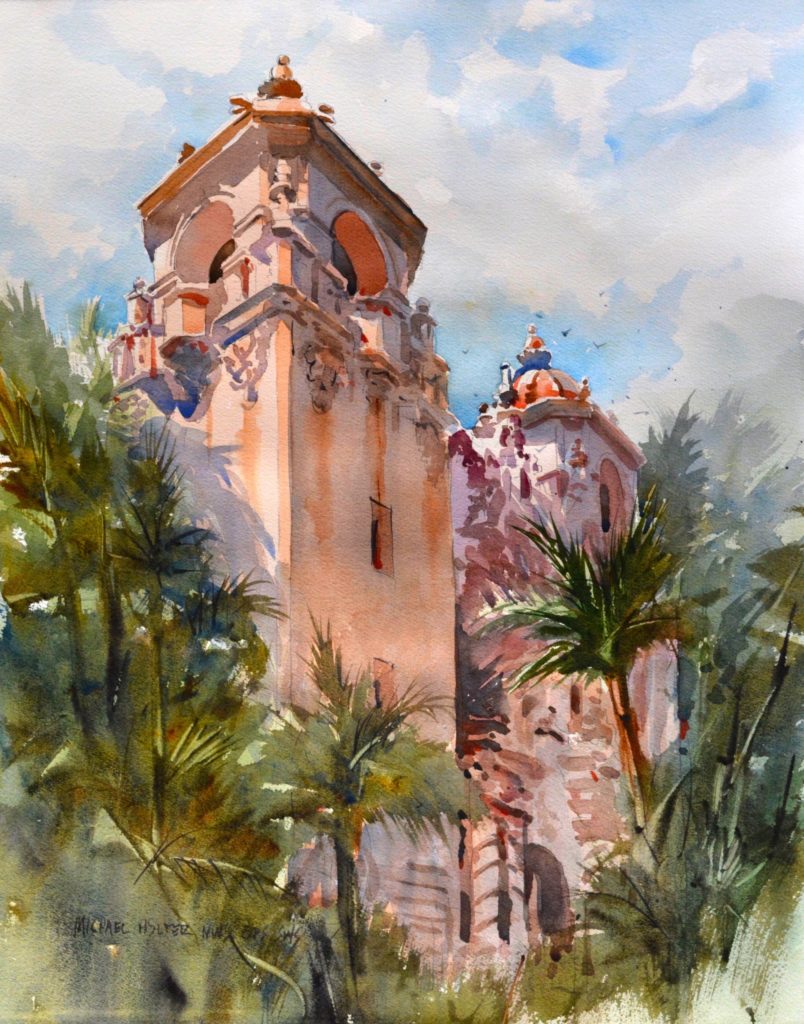
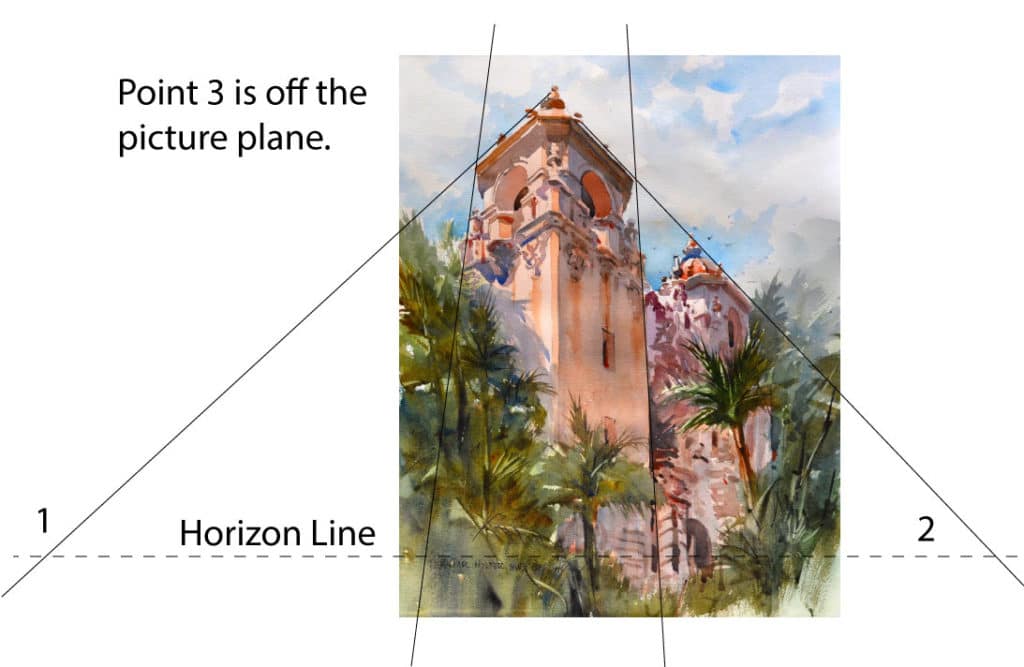
Linear Perspective
For my painting “The Pigeon Roost,” I wanted to emphasize the height and mass of the building. To do this, I used extreme linear, or three-point perspective.
The point of view is from a low angle and close to the buildings; therefore, the angle of the roof line at the top is much more extreme than nearer the horizon line. Drawing or painting objects in a landscape demands attention to how perspective influences what you see.
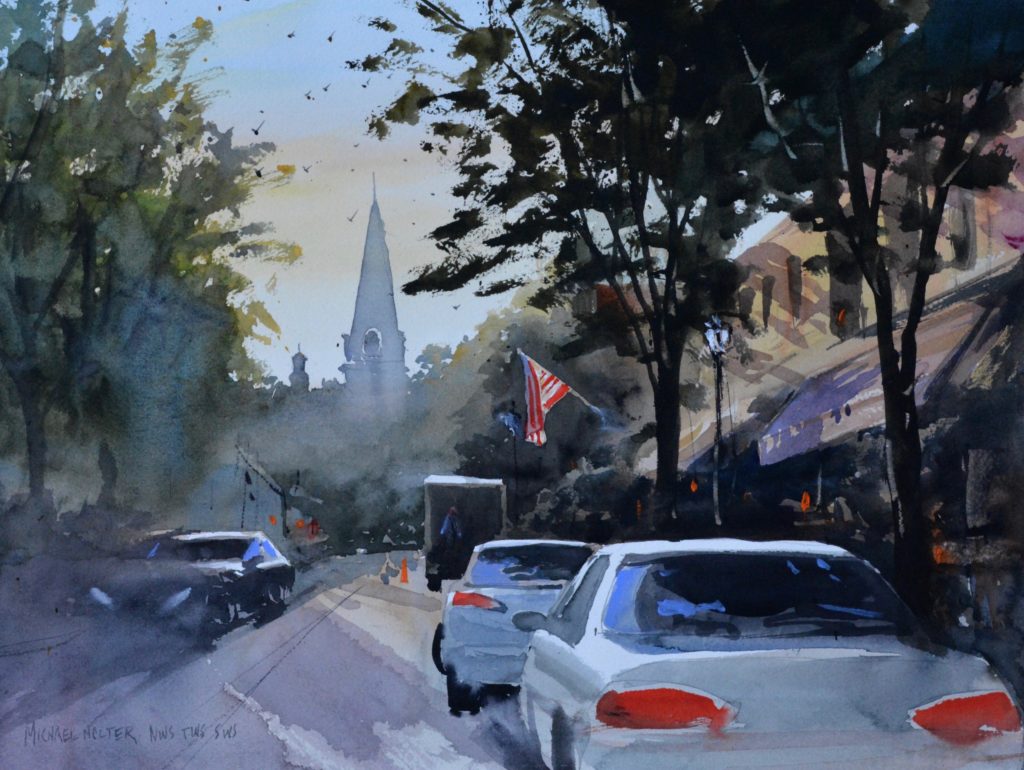
Aerial, Linear, and Solar
“The Banner” or “Oh Say Can You See” is an example that includes multiple examples of perspective.
Aerial perspective forces the steeple and other objects to the back of the painting. I often exaggerate the lighter values to get more depth than what is obvious to the casual observer.
Linear perspective is evident on the buildings on the right and the autos — the most obvious and familiar type of perspective.
Solar perspective is visible in the way the shadows are cast from the direction of the sun.
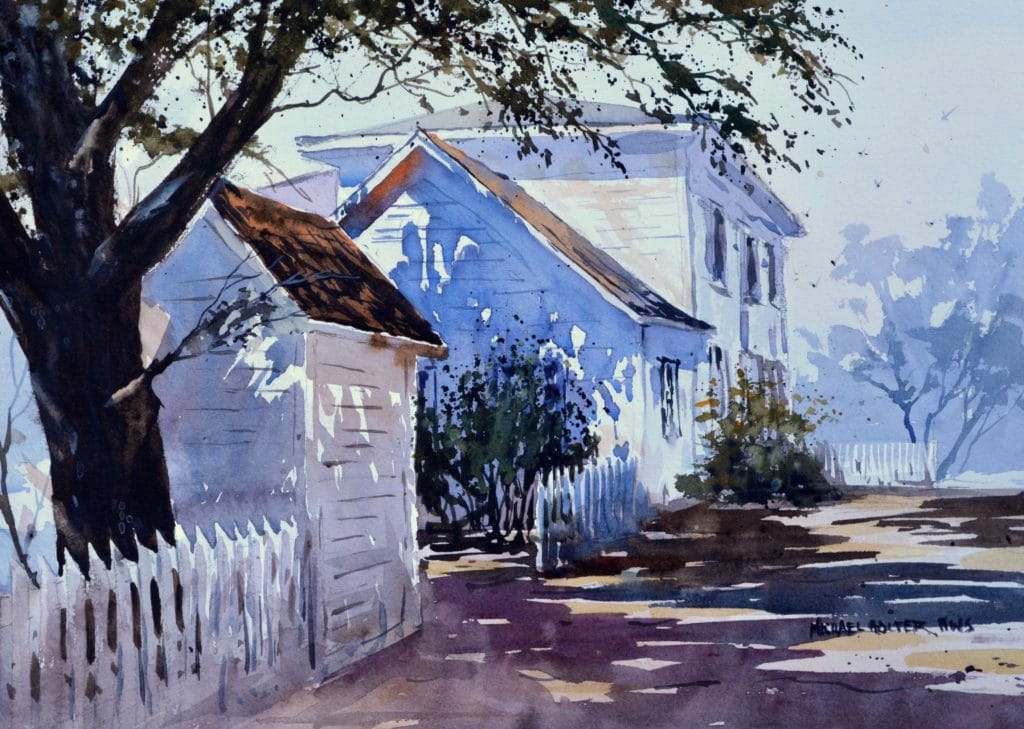
In “Shapes and Shadows,” I use aerial, linear, and solar together.
First, the aerial is evident in the cool and light values on the background trees. Again, exaggerated to emphasize depth.
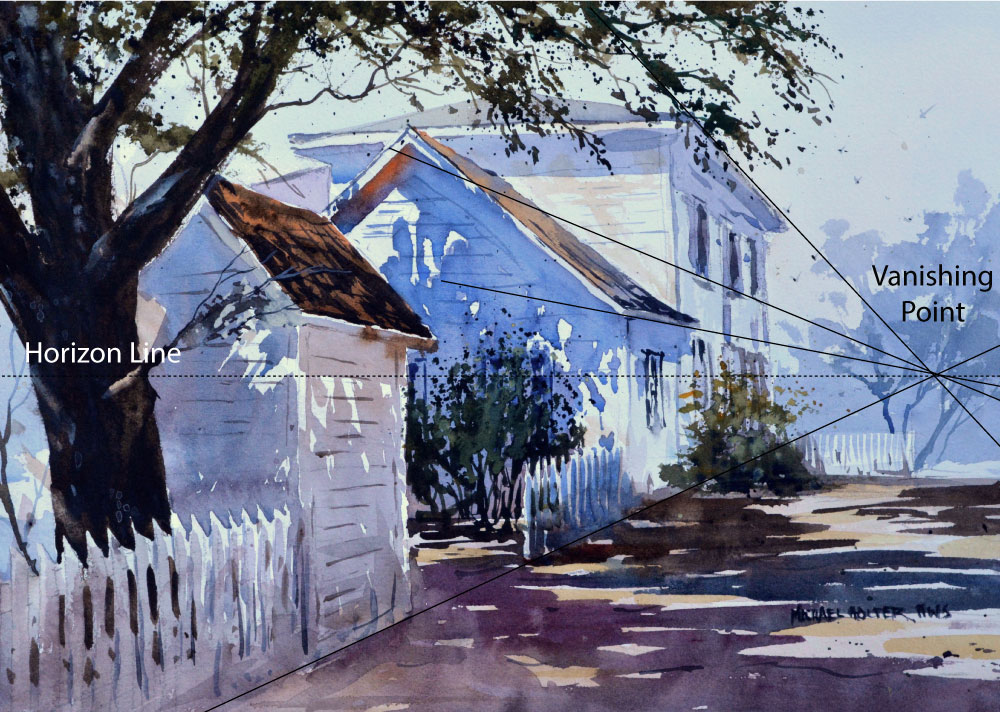
You can see the linear perspective in how the edges of the buildings are extending to the horizon line.
Finally, solar perspective is evident in the direction of the shadows, indicating that the sun is high in the sky and casting shadows downward onto the buildings and ground.
Conclusion
Not all painters place much emphasis on this tool. If you are a representational painter, however, it’s one of the best tools for sharing your point of view with your viewers. It allows you to tell them where they are in the painting, and how near or far the objects are within it. It gives depth and distance to your work and helps you share the experience of the scene.
For Additional Information on How to Paint Landscapes: If you’d like to learn more about painting landscapes, check out my new Creative Catalyst Productions video, “7 Steps to Watercolor Landscapes.” (Preview below)
Visit EricRhoads.com to find out all the amazing opportunities for artists through Streamline Publishing, including:
– Online art conferences such as Plein Air Live
– New video workshops for artists
– Incredible art retreats
– Educational and fun art conventions, and much more.
> Subscribe to Plein Air Today, a free newsletter for artists
> Subscribe to PleinAir Magazine so you never miss an issue

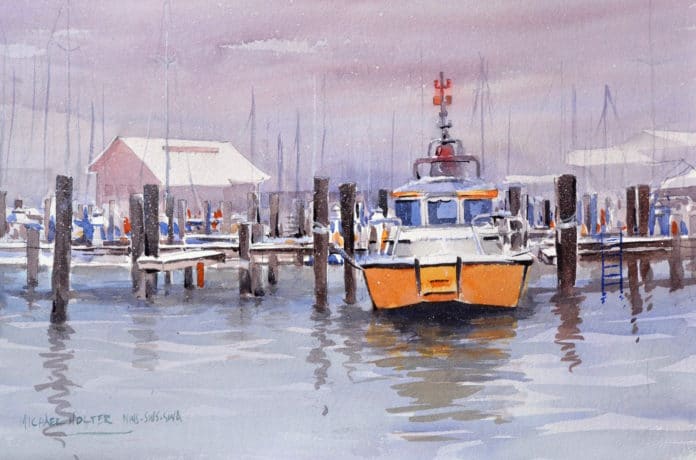

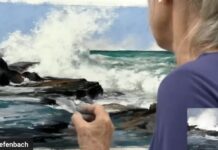
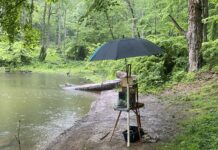

[…] to learn more, check out these articles on Outdoor Painter and Draw Paint […]
[…] Click to see full answer […]